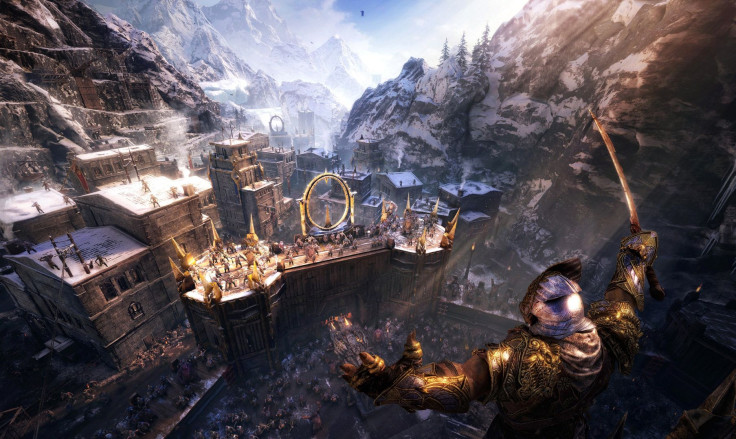Shadow of War’s loot boxes and endgame have become popular topics of conversation in recent weeks. Some early reviews of the game erroneously suggested paid loot boxes were the only way players would make any progress in Shadow of War’s endgame, the Shadow Wars campaign. Some who’ve taken a closer look are beginning to realize claims about the necessity of loot boxes might’ve been overblown. But it seems the real problem -- and stop us if you’ve heard this one before -- is that most of the people raging on forums and social media needed a little more information on the situation.
We recently had a chance to speak with Shadow of War Design Director Bob Roberts. During a meeting at PAX West, we discussed Monolith’s goals for fortress invasions and the Shadow Wars that hide the game’s true ending. Fans and web personalities have been quick to condemn Shadow Wars, suggesting it forces players to spend money on loot boxes, but it sounds like the reality of the situation is much less insidious. Monolith intended to create something with a bit more staying power than we’re used to by giving players a reason to fully explore the game’s most unique features: the Nemesis system and fortress invasions. Does that endgame content seem a bit grindy without microtransactions? Absolutely. But the entire point was giving Shadow of Mordor fans, many of whom stuck with the game for months/years after release, something to work towards after the sequel’s campaign had ended.
“One of the goals for us was giving [players] some goals that you can keep pursuing,” Roberts said. “In the last game, you dominate everyone and it becomes a little static. This time, [you have] that continuing reason to invest in these guys and keep building your relationships with them. And keep investing in them as, like, resources almost. So growing the keeps and making your defenses stronger, that will help both in the endgame -- after you beat the game there are a lot endgame defense missions to deal with -- and the online conquest.”
Loot boxes are an option for closing the gap between Talion’s abilities (and his armies) and the battlefield-readiness of Sauron’s forces. But that’s no different than the character kickstarts sold for the WWE 2K and NBA 2K games or the experience boosters available in many F2P games. The biggest difference here is that Shadow of War’s loot boxes don’t actually guarantee forward progress. It’s entirely possible (likely, even) you’ll pull orcs and training orders, which let you modify the abilities of individual orcs, that don’t help Talion out of his current predicament. There are chests that stress certain strengths/weaknesses, like Fire and Poison, but even those don’t have their stats, perks and abilities set in stone. It’s also worth noting that both of the currencies used to purchase loot chests can be earned in-game without ever spending a dime.
“We really wanted to ensure that everyone gets so much more value, for their money and so much more of their experience, just straight out of the box,” Monolith VP Michael de Plater told Player.One in a follow-up interview at the studio. “But at the same time, and I think this is a goal most AAA games have in common now, we’re not trying to give people a game that they play, get to the end of the story and then stop playing. You want people to play dozens and dozens of hours. Even hundreds of hours. So you’re putting much longer end-loop goals.”
The point of Shadow Wars wasn’t to put additional story content behind a paywall. Monolith wanted to reward players who continue to invest time in Shadow of Wars long after the game loses its spot in the news cycle. Not entirely unlike the nuclear disarmament ending included in Metal Gear Solid V: The Phantom Pain. Microtransactions, which are intended for people with more money than spare time, are just a reality of the games industry in 2017.
“My really confident expectation is that people are going to play the game and a lot of the fears and concerns...and we were surprised, I guess, by the level of the reaction. But I guess we’re in the position where we’re close to it. So we know what we’ve done and we know how cautious we’ve been about how we balanced it,” de Plater added. “I think ultimately there’s nothing we can really say ahead of time to fully reassure people. But when people do start playing it, and when they start talking to each other, people can see that a lot of what they were worried they didn’t need to be concerned about.”
Middle-earth: Shadow of War is now available for PlayStation 4, Xbox One and PC.
Be sure to check back with Player.One and follow Scott on Twitter for additional Middle-earth: Shadow of War news in 2017 and however long Monolith supports Shadow of War after launch.
- Nemesis system does an even better job of letting players witness and tell unique, action-driven stories
- Most of the narrative content is just plain boring



















